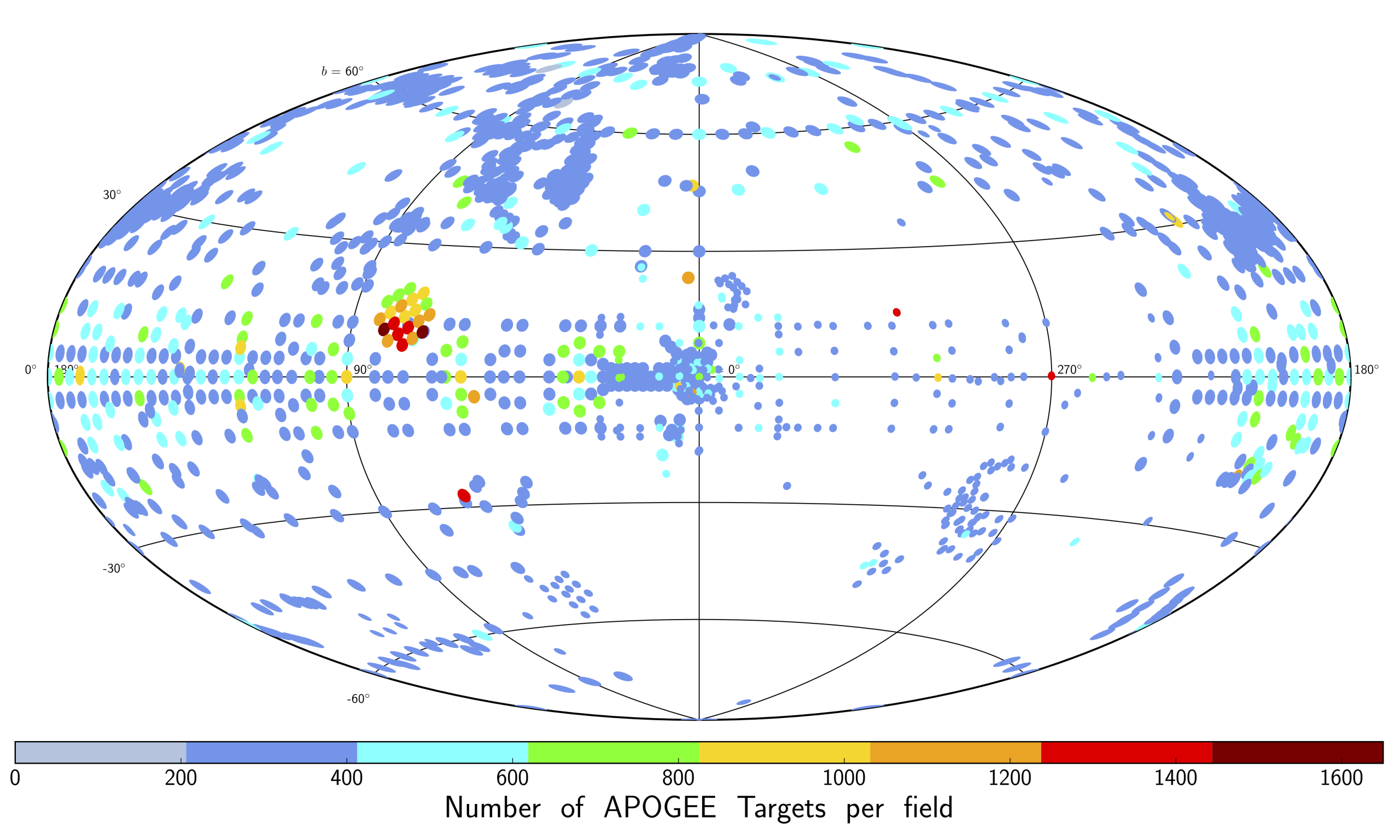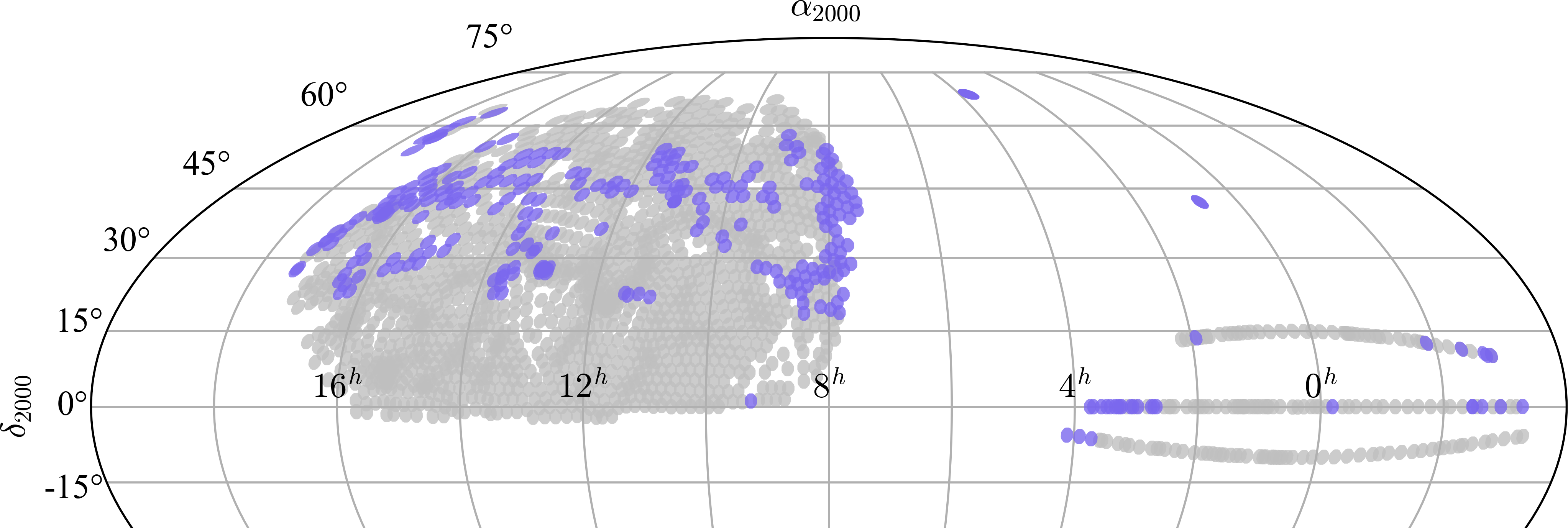What's New in DR16
Data Release 16 (DR16) is the fourth release of the Sloan Digital Sky Survey IV.
DR16 contains new optical and infrared spectra, including the first infrared spectra observed by Las Campanas Observatory in Chile. Previously released integral-field datacubes and maps, stellar library spectra, as well as images, are also included in DR16.
The SDSS's component extended Baryon Oscillation Spectroscopic Survey has started its mission in 2014 to map the Universe with the baryon acoustic oscillation (BAO) feature in the large-scale structure of the Universe, using data from both galaxy clustering and the Lyman-α forest.
Data Release 16 is the final public data release for eBOSS, and includes optical spectra of Luminous Red Galaxies (LRGs) and quasars (QSOs). The data release also includes optical spectra from a transitional project between BOSS and eBOSS called the Sloan Extended Quasar, ELG, and LRG Survey (SEQUELS), designed to test target selection algorithms for eBOSS. These SEQUELS spectra, as well as previously released BOSS spectra, had been re-reduced using the reduction pipeline updated for DR16.
DR16 also contains optical spectra of the eBOSS subprograms SPectroscopic IDentfication of ERosita Sources (SPIDERS) survey and Time-Domain Spectroscopic Survey (TDSS), as well as various Value Added Catalogs, which include, among others, targeting information.
eBOSS spectra are available through both the Science Archive Server (SAS) and the Catalog Archive Server (CAS) and can also be inspected and downloaded with our Science Archive Webapp (SAW). For more information on the eBOSS data in DR16, see:
APOGEE-2 is a large-scale survey of Milky Way stellar chemistry and kinematics. High-resolution infrared (H-band) spectroscopy allows APOGEE-2 to peer through interstellar dust extinction to provide a large, uniform database of precision stellar measurements throughout the Galaxy, spanning the central bulge to the halo.
APOGEE-2 releases new spectra in DR16, including the first spectra taken by Las Campanas Observatory in Chile (APOGEE-2South). Along with the spectra, APOGEE-2 also releases stellar parameters (e.g., $T_{\rm eff}$ and log $g$) and more than 20 elemental abundances derived from those spectra. All this data is included in DR16, while the documentation describing the APOGEE-2 data and data products has been significantly improved for this data release.
DR16 also includes prior APOGEE-1 spectra and data products (from DR10-14) that have been reprocessed with improved data reduction and abundance pipelines for DR16, including more accurate telluric absorption corrections. In addition to best-fiting values of global stellar parameters, APOGEE-2 also provides individual elemental abundances and uncertainties.
APOGEE-2 infrared spectra are available through both the Science Archive Server (SAS) and the Catalog Archive Server (CAS), and can also be inspected and downloaded with our Science Archive Webapp (SAW). For more information on the APOGEE-2 data in DR16, see:
MaNGA is an integral-field spectroscopic survey that will map 10,000 galaxies in the nearby Universe. DR15 is MaNGA's third and most recent public data release, and contains datacubes and row-stacked spectra (RSS) for 4,688 MaNGA galaxies (including ancillary targets and ~65 repeat observations), as well as Value Added Catalogs. DR15 for the first time also contained derived data products and maps produced by the MaNGA Data Analysis Pipeline.
MaNGA observes galaxies with fiber bundles that vary in size from 19 to 127 fibers (12 to 32 arcsec diameter on sky); larger bundles target larger galaxies, resulting in a uniform radial coverage. As a result, the number of spectra within each data cube and RSS file will vary depending on the fiber bundle size.
The MaNGA data cubes, row-stacked spectra and maps are available through both the SAS and the CAS, and can be visualised and analysed with Marvin. For more information on the MaNGA data, data products and tools, see:
MaStar is MaNGA's stellar library program: it observes stars with MaNGA's integral-field bundles in bright time. DR15 was MaStar's first data release, and contains 8,646 good quality spectra for 3,326 unique stars.
The MaStar spectra are available through both the SAS and the CAS, and can also be inspected and downloaded with our Science Archive Webapp (SAW). For more information on the MaStar data, see:






